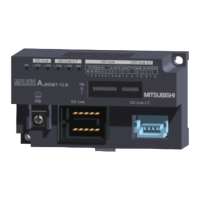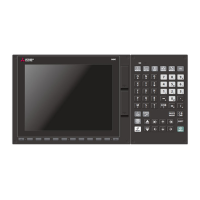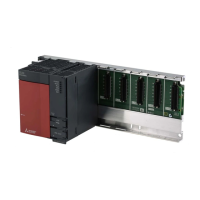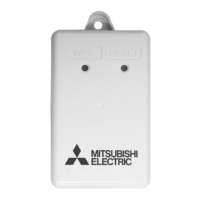1.4
Positioning Language
1.4.1
Absolute and relative positions
An ADR (ADDRESS) instruction is prepared to designate the movement distance (or rotation angle)
of the machine.
This operates the machine in combination with the
DRV
(DRIVE)
instruction.
The address instruction is shown either by the distance from the reference point or the distance from
the current position.
The former is called "absolute position designation" and the latter is "relative distance designation".
Example:
1-i-
Relative distance
Current position Distance from Station 1
Station
1
Station 2
Station
6
Station
4
Station
5
Station 3
0
-
28.8 km
-
83.9 km
__+
104.6
km
-
120.7 km
-
180.2 km
-
Suppose that the train is now at Station
3,
and the next target is Station
4.
In this case, it is correct
to
designate
104.6
km in the case
of
absolute position designation. However,
it is necessary to clearly define that the reference home position is Station
1.
In
the case of relative distance designation, it is necessary to designate
20.7
km.
It is also necessary to designate whether the train is going forward or backward.
The home position can be changed
Current position
1
22.8 km 32 km
I
-1-
.I
Station
1
Station 2 Station
3
Station
4
Station
5
Station
6
Station
7
-156.3 km -106.7 km -39 km
0
km ~36.9 km +59.7 km
+91.7
km
In the above figure, the absolute position is designated at each station with Station
4
as the home
position.
In this case, the absolute positions exist in both positive and negative values.
If it is necessary
to
go to Station
7
or Station
5
when the train is at Station
6,
this is expressed as
follows:
Showing the absolute position
[Absolute drive method]
\
Station
5
ADR +36.9
DRV ABS
ADR ~91.7
Station
6
DRV ABS Station
7
+36.9
+91.7
f
c59.7
r"
Showing absolute drive command
[Relative drive method]
Showing the relative distance
iJ
/
\
Station
5
ADR K22.8
DRV
-
Station
6
ADR K32
DRV
+
Station
7
.(
.,
/,
22.8
32
\
Showing the direction
of
movement
>
-
10-

